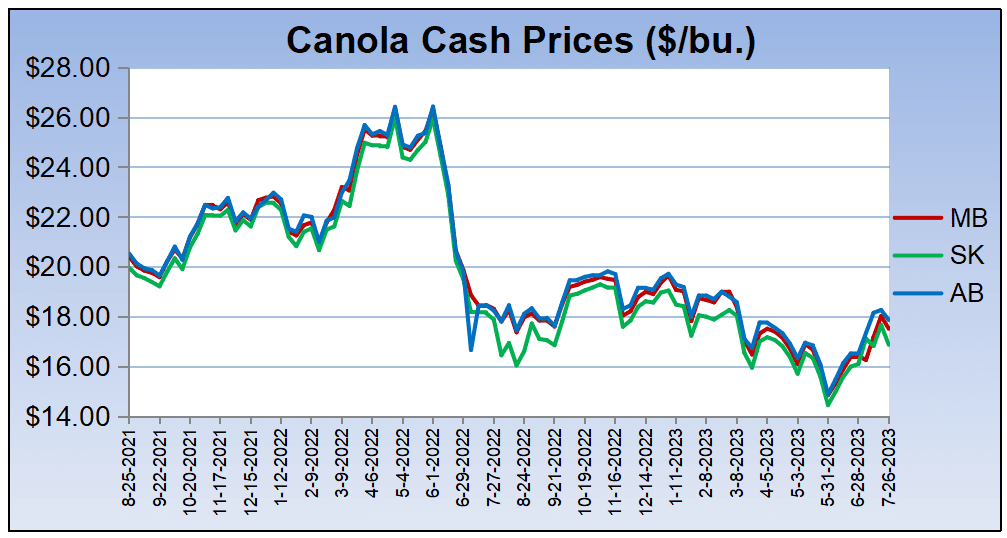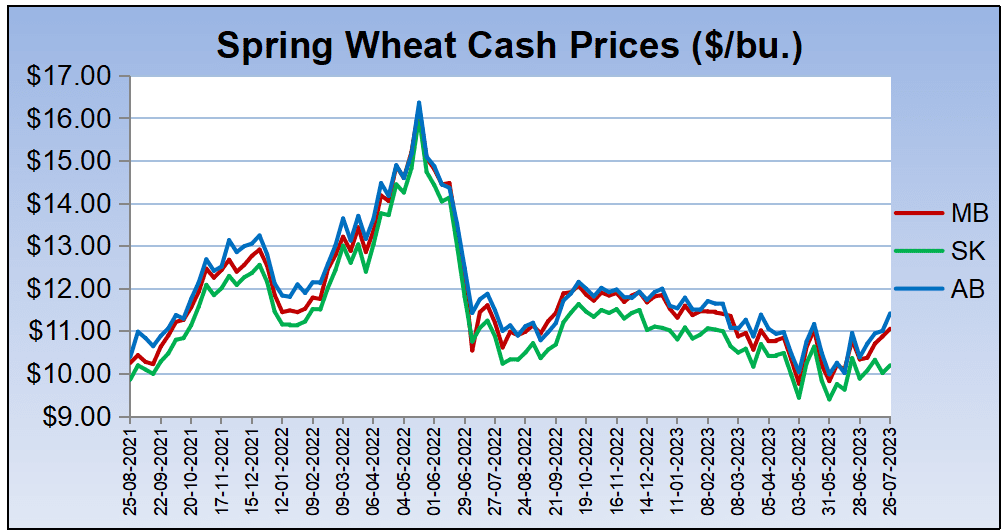Author: David Drozd, Co-founder, President, Senior Marketing Analyst
As an advisor I routinely get asked, “how much grain I should be selling?” I say it depends, as each farmers’ needs are unique to their farm operation. To arrive at a solution, I must first learn about their circumstances.
Once harvest is over, it is important for farmers to calculate what they have in the bin, so they can replace their projected yield and production with their actual yield and production. Then they can market their unpriced grain and determine if they should be making another sale and how much they should be selling.
In October 2022, the average price of canola on the Prairies was $19.30 per bushel. It would have been a little less in Saskatchewan and a little more in Manitoba and Alberta.
Farmers who wanted $20.00 were disappointed when the market fell short of their expectations and turned down.
On the other hand, farmers who calculated their gross revenue, were asking if they should be selling most of their crop. And why not. Their gross revenue was two to three times that of normal, and they were concerned the market would turn down and take with it their best year ever.
Farmers who were looking for $20.00, cited they needed this much to survive. They asked if I’d seen the price of fertilizer lately. I said yes, I am aware that at $800-$1,300 per tonne it took the same number of bushels of canola to pay for a tonne of 46-0-0 as it did three years prior when canola was $10.00 per bushel.
Sometimes it pays to look at what you have and not what you don’t have.
And as with canola, clients who also sold their wheat production in October 2022, were able to capture the highest gross revenue of their farming career. The average price of red spring wheat 1-13.5% on the Prairies was $11.75 per bushel. It would have been a little less in Saskatchewan and a little more in Manitoba and Alberta.
Farmers looking for the market to go back to the previous year’s high were disappointed when the market failed to rally any further.
Three advantages of selling grain in the fall are:
- You don’t have to worry about the grain spoiling in the bin.
- It’s a convenient time of year to pick up grain in bags.
- In addition, when a market is inverted, it is not paying you to store grain. Typically, in an inverted market where the nearby futures are higher than the deferred months, it is an indication the merchants want the grain now.
When we make a recommendation to sell grain at a market high, we sometimes hear, “We don’t need the money now”. However, when the market turns down, so do profits.
Don’t forget there is a cost to storing grain and a lost opportunity cost by not selling it to pay down debt or to put it to work in an investment.
Therefore, in trying to get the most for your production, it is often beneficial to consider selling grain to protect the gross revenue. By only focusing on price, you could be taking your eyes off the prize.
I’m David Drozd, senior market analyst at AgChieve. Call 888-274-3138 or text me at 204-510-5578 with your thoughts or questions.


